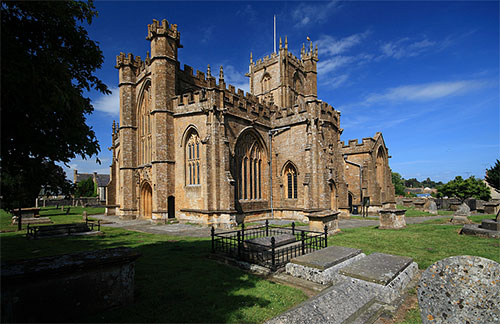

By Juliet Aykroyd
Crewkerne, Somerset, UK

Juliet Aykroyd (Credit: Thea Lacey)
One realises the want of a chronology which will give the lesser as well as the greater dates of the war years. On what date did the sugar-basin disappear? – Anonymous (quoted in HOW WE LIVED THEN by C. S. Peel (1925))
All through 2014 in the UK there were passionate discussions and TV and radio programmes about the battles of the Great War, as well as exhibitions and commemorative events such as the display of nearly a million ceramic poppies at the Tower of London. Crewkerne lost 131 of its young men to the hideous carnage.
If you look at a map of the UK you'll observe that the lower west coast somewhat resembles the head and foreleg of a giant pig. The leg juts into the Atlantic, with the Bristol Channel on its north and the English Channel on its south, and ranged east-west across it – from shoulder to trotter, as it were – are the counties of Somerset, Dorset, Devon and Cornwall. This part of England is often called the West Country.
For English people the name conjures up visions of spectacular coastlines, green hills, deep lanes, grazing ruminants, thatched cottages, rich cheeses, apple-orchards… a motorway-free idyll populated by cider-quaffing yokels with amusing rural accents. Stereotypes and fantasies aside, it's true that much of the West Country is beautiful and remote and easy-going, and Somerset – where I live – claims the mildest climate in England. It has been a desirable place to settle for at least two thousand years, as attested by several remains of Roman villa-style farmhouses. In Wales the county's name is Gwlad yr Haf: "the place of the summer". Today's visitors rent holiday cottages, and admire the picturesque villages and stately homes built of honey-coloured oolitic hamstone from the famous quarry on Ham Hill. Crewkerne – my adopted town – is in South Somerset, close to the border with Dorset, thirteen miles from the nearest Channel coast. It's small, nowadays somewhat sprawling, and sheltered by hills. All around it is luscious well-watered agricultural land; cattle-raising, dairy-farming, sheep, apples, crops of all kinds have featured in its agrarian history.
The town features several elegant hamstone houses, and one of the finest parish churches in England, but otherwise it is not particularly lovely. Scholars disagree about the origin of its unmellifluous name. One suggestion is that it comes from the Celtic word cruc, meaning a hill, and it does indeed nestle under a distinctive hill. Another possible derivation is the Latin crux, or "cross", since it lies at the junction of what were once two ancient roads of immense importance, linking London to Exeter and Bristol to Dorchester. Yet another theory holds that in early Christian Saxon times a preacher's cross (cruce) once stood at its centre, with a hermitage (earne) beside it. Whatever its name means, being the crossroads of two important thoroughfares it must always have been a pit stop for travellers.
Nowadays you can get to the west more quickly by other main routes, but Crewkerne still has the edgy feel of a halting-place: somewhere to conduct a business deal or grab a drink and a sandwich, rather than a site to linger and wander about.

St. Bartholomew Crewkerne (credit: Mike Searle)
There have been highs and lows in its history. First inhabited by inscrutable Celts, in the ninth century it was an Anglo-Saxon Royal Manor, with the right to hold an annual fair on St Bartholomew's Day, and to mint coinage. This was one of its prosperous and privileged times, though we know little of the daily happenings. Maybe the industrial skills needed for making coins set a typical course for later prosperity. Crewkerne's output has always been based on a combination of industry and agriculture.
The next heyday was during the English wool-producing boom of the Middle Ages. The West Country was sheep country, and Crewkerne did well out of fleeces. A vivid manifestation of its wealth and success is the beautiful 15th century hamstone church of St Bartholomew, still rising gloriously if a little forlornly above the town's centre. One of the first grammar schools in England was founded in 1499; its structure survives near the church, though the school is no more.
What with bubonic plague and foreign competition the woollen business declined, and Crewkerne's entrepreneurs diversified into different kinds of cloth production. Here, by coincidence, Saint Bartholomew comes into the story again: two French weavers, maybe Huguenot refugees from the St Bartholomew's Day massacre in 1572, are recorded as residents around this time. It's possible that they were attracted here by an already-established weaving industry.
Crewkerne's importance as a flax-processing textile town kept on growing in the subsequent centuries. Flax is a crop that flourishes in the local conditions, and it was widely cultivated for linen. Even today you sometimes come across a field of flax: soft blue flowers quivering in the breeze. Linen-making was a cottage industry at first, and for the most part women's work, and difficult too. Then came industrial mechanisation, and production switched from piecework to mills and factories. As early as the seventeenth century there was a workshop that made webbing, used for harness and shipping. Soon after that the town was busily producing sailcloth, ropes and hammocks for the merchant vessels of the expanding British Empire and the warships of the thriving British navy, including (so the rumour goes) Lord Nelson's flagship Victory.
By the mid-nineteenth century there were twenty-seven sailcloth makers in the district, and other textile-related industries, notably – and again suited to women workers – glove-making, dressmaking, shirt-making and wig-making. Connections for commerce were excellent: Crewkerne was a posting stop on the main road, the coast was not far away and the railway arrived in 1860. This was one of the best times in its history. The population soared, big houses were built in Georgian style for the bosses, and rows of cottages sprang up for the workers, together with shops and banks, and coaching inns catering for travellers.
But by the end of the century ships no longer needed sails, and the prosperous days declined. Agriculture was becoming more mechanised and less labour-intensive. Many families moved away from the town, to find work in Welsh steel works and coalmines, or to rear sheep in the Falkland Islands.
So when we reach the outbreak of the Great War in 1914, we find a fairly typical semi-prosperous town with a tradition of civic solidity, and just under 4000 inhabitants. Half are employed in agriculture, half in the surviving local industries and town services. What is a little unusual is the high number of working women. And the nature of the industries will play a significant part in the town's war story. Ironically enough, Crewkerne is all set to boom again.

Crewkerne Town Hall (credit: Lewis Clarke)
If a time machine could transport us back to 4th August 1914 and deposit us outside the George Inn in Market Street, what would we see? Plenty of bustling people. Men lounging and chatting outside the Town Hall (this is the holiday month). Horses. Carts and carriers of all kinds. Delivery boys. Children playing barefoot in the street. Gas lamps. Women in long skirts and blouses. Farm workers in smocks and gaiters. Everyone wears a hat of some kind. Maybe we see a couple of strange black structures on wheels, called motorcars. There are plenty of shops: three general stores, shoe shop, butcher, baker, two jewellers, hairdressers, a milliner, a draper, a chemist, a fishmonger. Down the road is the railway station, an edifice of great charm with hamstone gables and decorative woodwork. It is harvest time soon, and we can smell hayfields and manure.
At one level this is a well-organised, well-heeled place. Look closer and we might notice that some people are skinnier than others. Some are pale and dark under the eyes. It's well known that 30% of men offering for recruitment in World War 1 were unfit. Crewkerne had the highest incidence of tuberculosis in the region; this contagious and at the time incurable disease spread dangerously in the overcrowded, insanitary housing of many workers, maybe aggravated by dusty factory conditions.
What kind of society was this? As elsewhere in England it was still quasi-Victorian. In 1914 there were deep divisions between social classes as well as disparity of income. These were manifest in lifestyle differences: in diet, dress, leisure amusements, the way people spoke, what they read, how they behaved. Wealthier people in Crewkerne were businessmen or professionals, or successful farmers and tenant farmers: gentry rather than aristocrats. There was no Manor or Lord of the Manor. Lower down the scale were shopkeepers, artisans, publicans, clerks and managers. At the bottom were the poor, who – it was assumed – would always be there: the unemployed, unskilled, elderly, sick, disabled or otherwise hapless. The living conditions of the underclass were insanitary and terrible, given the wealth of the country as a whole, in rural as well as urban areas.
In the England of 1914 there was plenty of food and domestic coal to go around evenly, but the upper classes had too much to eat (witness contemporary cookbook menus) and the lower classes not enough. As a matter of course, middle and upper class households kept servants, who were plentiful, but otherwise there was little contact or familiarity between social groups.
Religious attendance featured more powerfully in people's lives than it does now. As well as two Church of England congregations, Crewkerne had its Baptists, Unitarians, Quakers and other Nonconformist practitioners. When I started to think about 1914 I hoped to find personal accounts of how everyday lives were affected by the war, but there is surprisingly little written material of this kind. Censorship and British reticence kept all but the most banal information under a blanket of silence. To complain was unpatriotic. The clergy perhaps had more insight than most, and were free to raise their voices, in a restrained and sometimes oblique manner, and articulate thoughts about life on the home front. One of them was the Vicar of St Bartholomew's, the voluble Reverend H. Durbin Lewis. From his monthly Parish Magazine and other kinds of printed newsletters I began to extrapolate a sense of the upheaval in people's lives by 1918. For all its horror and waste, the war made way for progress in some areas.
Here is an extract from a poem of 1914 by one Eileen Pittard, printed in the Parish Magazine, which records the sentiment, and the piteous unknowing, of those at home trying to imagine the thoughts of the men in Flanders:
It's not this muddy trench I see
But a winding brook and a withy tree
In Somerset.The stench of battle is wafted away
By sweet apple-blossom and new-mown hay
In Somerset.Oh for a draught of frothy ale
From that stone-flagged cellar remembered well
In Somerset.Lord cool my head and heated brain.
Am I in Flanders or home again
In Somerset?
In the next column I will explore some effects of these deaths on the community, the unique way in which the town recorded its appreciation, and guilt, after the Armistice, the general improvement in health and nutrition at all levels of the populace and the improving status and confidence of English women. Disappearing sugar-basins will come into the story before I am done.
Link:
Juliet Aykroyd at Stay Thirsty Publishing






